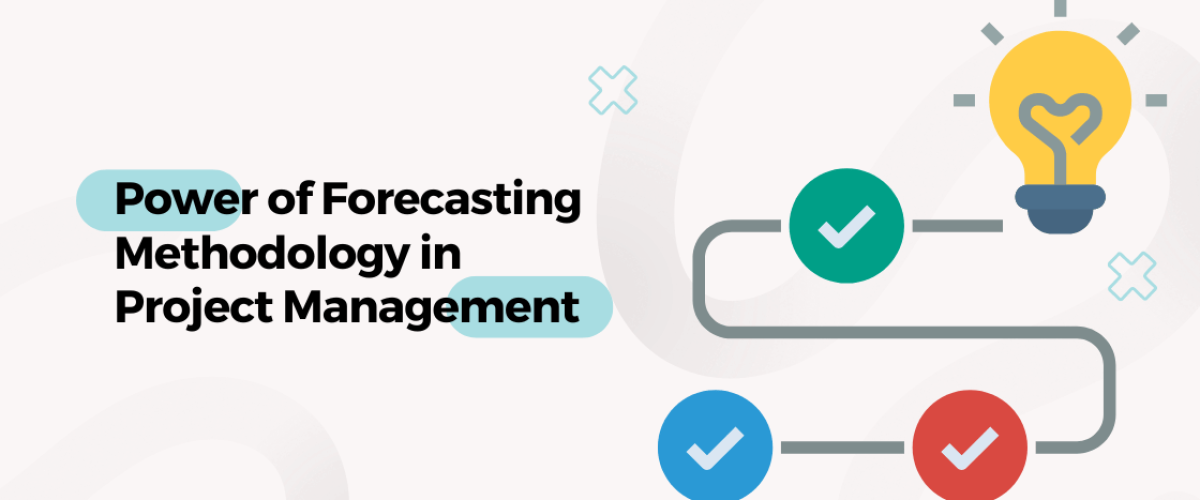Introduction
Did you know that only 2.5% of companies complete all their projects? This shows just how important forecasting is in project management. Understanding the power of forecasting methodology in project management is crucial for ensuring project success.
This guide explores project forecasting, why it’s important, different forecasting techniques, and how to apply them effectively in projects.
Project forecasting is like looking into the future of your project. It helps predict things like costs, time, and the quality of work you’ll deliver. Imagine being able to foresee potential problems before they arise. That’s what forecasting in management allows you to do. It’s a way to plan better and make smarter decisions to keep your project on track.
By learning to calculate time and cost, you can manage resources more effectively, ensuring your project stays on track. Whether balancing project scope, budget, or time, managing time cost can mean the difference between success and failure.

Why Accurate Forecasting is Essential for Project Success
Accurate forecasting methodology is essential because it helps you avoid surprises. When you know what to expect, you can prepare better and ensure everything goes according to plan. If you don’t forecast project management properly, you might run into issues like running out of money, missing deadlines, or delivering a product that doesn’t meet expectations.
There are different ways to forecast, depending on the kind of project you’re working on. Some methods involve looking at numbers and data, while others rely on expert opinions. Understanding these different forecasting techniques helps you choose the best one for your project.
Forecasting Methodology in Project Management
Project forecasting is like making a map for your journey. It tells you where you might encounter bumps in the road and how long it will take to reach your destination. Forecasting isn’t about guessing; it’s about using information to predict what’s likely to happen in the future.
Key Performance Metrics in Project Forecasting
To forecast project management effectively, you need to track key performance metrics:
- Project Cost Estimate: This is about predicting how much money you’ll need to complete the project. If your forecast is off, you could end up overspending or running out of funds.
- Project Duration: Knowing how long your project will take is crucial. This helps you plan resources and set realistic deadlines.
- Project Quality: It’s not just about finishing on time and within budget; the quality of your work matters, too. Forecasting methodology in project management helps ensure that the final product meets the required standards.
You might also like this: Reducing Duration of Project Management
Difference Between Forecast vs. Projection
While forecasting in management and projection might sound similar, they are quite different. Forecasting techniques generally use current and past data to predict future outcomes. Projections are more of a rough estimate or assumption of what might happen. Forecasting methodology is more accurate because it’s data-driven, whereas projection is more of an educated guess.
Types of Forecasting Methodology in Project Management
Qualitative Forecasting Techniques
- These methods are based on opinions and judgments rather than hard data.
- Expert Judgment: This technique relies on the experience of experts who have worked on similar projects before. Forecasts based on judgment and opinion do not include quantitative data but are still valuable.
- Delphi Method: In the Delphi method, experts are consulted, and their feedback is collected in multiple rounds to reach a consensus.
- Scenario Planning: This involves imagining different future scenarios and planning for each one.
Quantitative Forecasting Techniques
These methods use numbers and data to make predictions.
- Time Series Analysis: This technique looks at patterns in past data to predict future outcomes.
- Regression Models: These models identify relationships between different factors to predict future trends.
- Monte Carlo Simulations: This method uses random sampling and statistical modelling to estimate the probability of different outcomes.
- Causal Models: These models identify cause-and-effect relationships to make accurate predictions.
- S-Curve Forecasting: This technique uses an S-shaped curve to model the growth of a project over time.
Develop a Robust Forecasting Methodology in Project Management
Data Collection and Analysis
Collecting accurate data is the first step in forecasting methodology. This includes gathering information about past projects, market trends, and any other relevant data. Analyzing this data helps you understand patterns and make better predictions.
Model Selection and Development
Choose the forecasting methodology that best suits your project’s needs. Whether it’s a qualitative or quantitative method, the right model will depend on the type of project and the data available. Quantitative methods of forecasting include things like time series analysis and regression models.
Model Implementation and Monitoring
Once the model is developed, it’s time to implement it. Implementing the model means using it to make predictions about your project. Monitoring is crucial because it helps you see if the forecast is accurate and allows for adjustments as needed.
Continuous Improvement of Forecasting Models
Even after implementing a model, there’s always room for improvement. Regularly updating and refining your forecasting methodology ensures it stays accurate and reliable throughout the project.
Common Pitfalls in Forecasting Methodology in Project Management
Over Reliance on Historical Data
While past data is useful, relying too much on it can be a mistake. Projects can be unique, and what worked in the past might only sometimes work in the future.
Ignoring External Variables
External factors like market changes, new regulations, or unexpected events can impact your project. Ignoring these can lead to inaccurate forecasts.
Underestimating Uncertainties
No project is without risks. Refrain from underestimating uncertainties, which can lead to surprises that could derail your project.
Inadequate Stakeholder Collaboration
Forecasting methodology is for more than just the project manager. Involving stakeholders ensures that all perspectives are considered, leading to a more accurate forecast.
Benefits of Effective Forecasting Methodology in Project Management
Improved Project Planning and Scheduling
- Accurate forecasts allow you to plan more effectively.
- You can set realistic timelines, reducing the risk of delays.
Better Resource Allocation
- Project forecasting helps determine the resources you need and when you’ll need them.
- Ensures you don’t run out of resources or overspend.
Enhanced Risk Management
- Predicting potential issues lets you plan.
- It helps you avoid or mitigate risks, keeping your project on track.
Increased Stakeholder Confidence
- Accurate forecasts build trust with stakeholders.
- Stakeholders gain confidence in your ability to deliver the project successfully.
Implementing Forecasting Methodology in Project Management
Ensuring Accurate and Reliable Data Collection
Accurate data is the foundation of good forecasting methodology. To improve the accuracy of your forecasts, make sure your data is reliable and up-to-date.
Regular Updates and Refinement of Forecasts
Update your forecasts regularly as your project progresses. This allows you to adjust your plans based on new information.
Collaborating with Stakeholders and Experts
Involve stakeholders and experts in the forecast project management process. Their input can provide valuable insights and improve the accuracy of your predictions.
Monitoring and Adjusting Based on Project Progress
Keep a close eye on your project’s progress and adjust your forecasts as needed. This helps you stay on track and make informed decisions.
Conclusion
In Conclusion, we hope you enjoyed this Comprehensive guide and got knowledge that Forecasting methodology in project management is an essential tool. It helps you predict future outcomes and make informed decisions to ensure your project’s success.
Choosing the right forecasting methodology is crucial. The right model helps you plan better, allocate resources more effectively, and manage risks.
As technology advances, new tools and techniques will continue to emerge, such as advanced project forecasting software. Staying up-to-date with these trends will help you remain competitive and improve your project outcomes.
Try KolApp
Free 14 Day Trial
Table of Contents
Subscribe to our Newsletter
Subscribe to our newsletter and stay updated!

